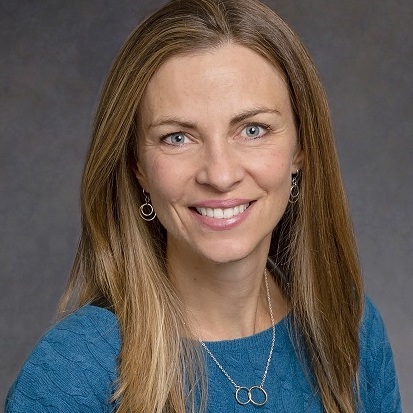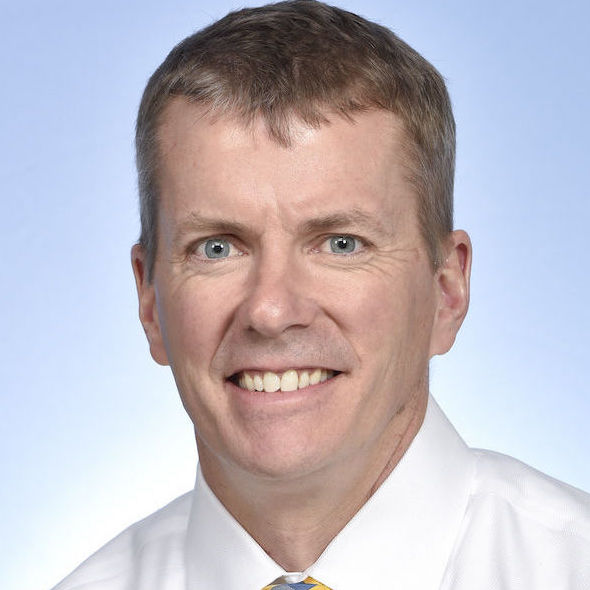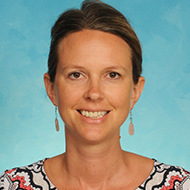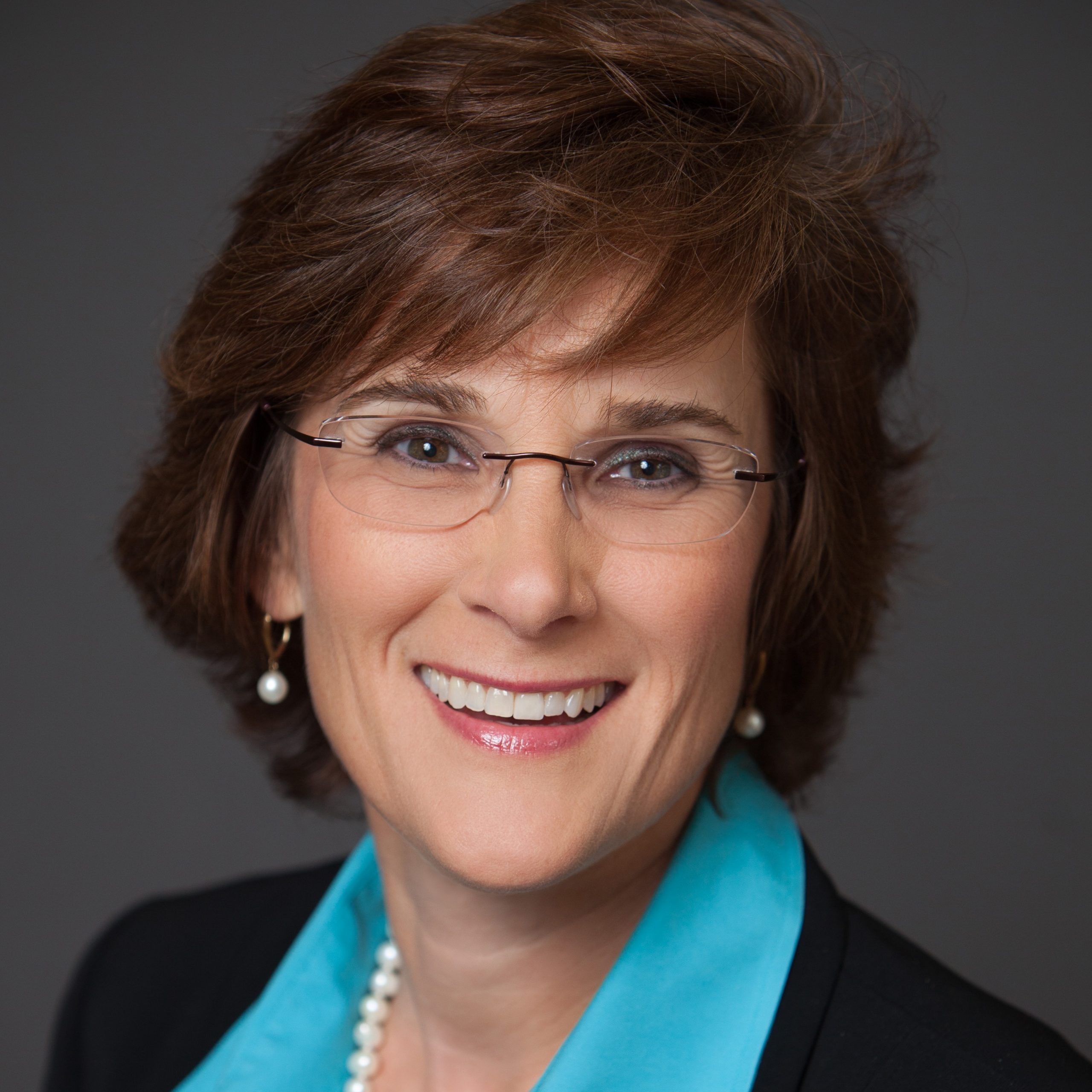S1E70: Country In-Roads: Building Vaccine Confidence in Rural America / Elizabeth Ellis, Dana Friend, Anna Loge, Chris Martin
“The messaging that we’ve done in West Virginia is, look, we are leading the country, and that has really given people a sense that we can dispel a lot of negative stereotypes. We can be a world leader in a positive way.” -Chris Martin
Rural America’s vaccine rollout has bucked expectations. A recent survey from the Kaiser Family Foundation found that four in 10 rural Americans reported getting at least their first dose of vaccine. That’s compared to three in 10 in urban and suburban areas. In this episode, we’re going to hear how healthcare workers are getting the word out about vaccination in three different rural communities. We’ll hear about the challenges to convincing people to get the vaccine, what’s working, and what it’s like to volunteer in a rural vaccination clinic.
This podcast was created by Just Human Productions. We’re powered and distributed by Simplecast. We’re supported, in part, by listeners like you.
Elizabeth Ellis: I think in the very beginning, they didn’t believe it was real.
Anna Loge: Almost everybody in our community, I would say, knows somebody who’s had COVID.
Chris Martin: When you look at vaccine hesitancy, a lot of the concerns that people have are fundamentally issues of trust.
Céline Gounder: You’re listening to EPIDEMIC, the podcast about the science, public health, and social impacts of the coronavirus pandemic. I’m your host, Dr. Céline Gounder.
Anna Loge lives in the city of Dillon, Montana.
Anna Loge: It’s a ranching community. So think of wide open valleys, um, high mountain Rocky mountain mountains. It’s as classic Montana as you possibly can get.
Céline Gounder: Anna grew up here. She left for medical school and even worked as far away as Australia. But she never forgot her hometown.
Anna Loge: I’d always said I wanted to move back to a place like Dillon. And I looked at a lot of different places and realized there’s really no place like Dillon. And so we chose to move back home and raise our kids where we grew up.
Céline Gounder: For the last ten years, Anna’s been a practicing general internist there. Dillon is a city of around 5,000 people but there is a critical care hospital there where Anna works. She remembers their first COVID case in March of last year.
Anna Loge: I distinctly remember getting the phone call that we had our first positive test within our patient panel. Over the course of several days has conditioned declined very, very quickly. And we very much realized we were dealing with something we had never seen before. There was so little that we could do to help help this individual. We elected not to escalate care to intubation and he ended up dying with wonderful nurses at his bedside. But it was, it was really rattling too, for all of us to have gone through that.
Céline Gounder: Anna says they quickly figured out their COVID procedures. But there were other challenges. Some people just didn’t think the pandemic was a serious threat… especially Dillon’s political leadership.
Anna Loge: So from a political leadership standpoint, there was a very strong anti COVID anti mask, anti public health component on that board.
Céline Gounder: Public meetings about masks and other public health measures got contentious.
Anna Loge: I don’t think there were ever any verified threats against public health officials. But I know that our public health officer became quite afraid at times for her family safety.
Céline Gounder: But Anna says these tensions eased.
Anna Loge: I’ve been proud of our committee through this entire response, even despite some of the political difficulties. And the vaccine roll out, I think has actually been going really well. Montana, when you look at the national numbers, is at least ahead of most states in terms of the rate of vaccination. And our rural communities actually are doing better than our more urban communities.
Céline Gounder: While some perceptions of rural America suggest vaccination rates would be lower, a recent survey from the Kaiser Family Foundation found the opposite. Four in ten rural Americans reported getting at least their first dose of vaccine. That’s compared to three in ten in urban and suburban areas. In this episode, we’re going to hear more about what’s working in Dillon, and how other communities in rural America are handling the vaccine rollout. We’ll hear about the challenges to convincing people to get the vaccine…
Elizabeth Ellis: A large number of the elderly immediately wanted to obtain the vaccine. But then there was a substantial amount that did not have confidence.
Céline Gounder: Hear what’s working in rural communities…
Anna Loge: There was a real consistency in being able to set up these Friday clinics, and the volunteers at the vaccine clinics were local community people that you knew.
Céline Gounder: And what it’s like to volunteer in a rural vaccination clinic.
Dana Friend: You’re somewhat emotionally exhausted because you, you’ve given a lot at the end of the day. But you’re, you’re also on top of the world. It’s a mixture of feelings.
Céline Gounder: Today on EPIDEMIC… rural America and vaccines.
Anna says because Dillon is a small community, almost everyone knows someone who got COVID or even died from it.
Anna Loge: So it really does touch people, but there is still this strong sense that it’s not that big of a deal, all of these restrictions seem to be a bit overblown, and that’s a hard narrative to kind of work within or maybe even sometimes, work against, to try to do the best for our community and for our patients.
Céline Gounder: You know, it’s interesting what you were saying about people having a personal connection to many of those who have died in the community, because it is such a small community. How does that square with the notion that it’s not a big deal?
Anna Loge: Yeah. So it’s interesting. So — when I talked to people about COVID and how serious it is, I more often hear them say, “Oh, well, so-and-so had it. And they didn’t get really sick and they should’ve gotten really sick.” And so, the focus really is more on all of these people who didn’t actually get that sick. And that tends to be the stories that drive more of the narrative versus those that actually died.
Céline Gounder: Besides ambivalence about the virus, Anna says she encounters a lot of questions about the vaccine. The most common concerns are about safety, side-effects, and how fast the vaccines were developed. Anna says earlier in the pandemic, they tried to get information out about the vaccines through their public health department. But the politicization limited their reach.
Anna Loge: And so I really have gotten to a point where the best way to have the conversation is a one-on-one, generally in the office. So I can’t tell you the number of hours I’ve spent on either talking about, uh COVID and, health precautions, or now vaccinations. And that tends to be the most effective way to allow people to perhaps change their minds.
Céline Gounder: Anna says there are a few people whose minds she just can’t change. But she’s reaching a lot of other people. She says the key is to listen to their concerns and then talk through the science.
Anna Loge: So even despite that hesitancy with that conversation, three out of four, I would say, are actually making the choice some few weeks later to get vaccinated.
Céline Gounder: Besides sharing the facts about vaccines and their safety, Anna finds other ways to convince people.
Anna Loge: I have a patient who wasn’t gonna get vaccinated, but I talked to him a little bit about kind of the role of ending the pandemic is going to require, you know, approximately two thirds of people need to choose, to get vaccinated. And is he going to be part of the solution or let everybody else solve this pandemic for him? And he saw me a week later, he said, you know, I heard what you said. And I decided to be part of the solution, which I thought was just awesome.
Céline Gounder: So once people decide to get vaccinated, where do they go? Access and distance are some of the biggest challenges when it comes to getting vaccines into rural communities. Some people may have to drive for hours to reach a vaccination site.
Anna Loge: We learned really quickly that you can’t really give these somewhat sporadically in clinic. And so our county health nurses, organized, um, mass immunization clinics every Friday. And we’ve been doing this since the end of January.
Céline Gounder: When we spoke with Anna, almost 30% of her county had been vaccinated.
Anna Loge: Over 70% of our patients over the age of 70 have received at least one immunization as of last week. And I think that’s a pretty powerful number too. So, I feel like we’re doing well, by the state metrics we’re doing really well.
Céline Gounder: Having a single location where people know there will be vaccines available every Friday has been a big help when it comes to improving access. But some communities don’t have the resources of a critical care hospital like Dillon. Sometimes there’s just one provider in a small town. Someone like Elizabeth Ellis.
Elizabeth Ellis: My name is Elizabeth Ellis. I’m a doctor of nursing practice, family nurse practitioner. I am the clinic owner and operator of a accredited rural health clinic in Bedias, Texas.
Céline Gounder: Bedias, Texas is about halfway between Houston and College Station, where Texas A&M is located. Bedias is a small town — less than four hundred people. The median age there is fifty. And Elizabeth’s clinic is the only one of its kind for miles. To help improve access to vaccines across the state, Texas officials set up vaccine centers called hubs.
Elizabeth Ellis: Our hub that has been designated for our county is a whole ‘nother county away. And given where we are located and where that hub is, that would take patients here in Bedias an hour to drive to. Oh, people do not have reliable enough transportation to do that.
Céline Gounder: Setting up appointments was also a challenge.
Elizabeth Ellis: You have to realize we are very rural and most of these residents don’t even have computers, and cell service is sketchy at best.
Céline Gounder: So, Elizabeth looked at the situation and made up her mind.
Elizabeth Ellis: I knew right away, given the limited availability and the travel time and/or the lack of internet access, that I would have to at least attempt to start to try and vaccinate.
Céline Gounder: Elizabeth’s quest to help vaccinate her community is a good example of some of the challenges rural providers face. The first issue was if her clinic even had the resources to keep the vaccine. Remember, the Pfizer vaccine, the first to get emergency use authorization, has to be kept at very cold temperatures. Many rural clinics don’t have the equipment to handle it.
Elizabeth Ellis: I did not have a deep freeze, but I knew I could hold Moderna just fine.
Céline Gounder: So Elizabeth put in a request for hundred doses of the Moderna vaccine.
Elizabeth Ellis: And so we gave an, an initial 100 vaccines in January, beginning, January 11th. And it took me a week to get all 100 administered.
Céline Gounder: Elizabeth’s clinic is small, so she needed all the help she could get to administer those vaccines. Other healthcare workers volunteered to help. And a local Baptist church played an important role, too.
Elizabeth Ellis: Yes without, um, the churches and the faith leaders, you know, trying to talk with their congregations. I, I’m not so sure that we would have had the good turnout that we did.
Céline Gounder: But it wasn’t a sure thing Elizabeth would even have second doses to give people. She reached out to a state representative to help secure the vaccines she needed. Soon she was on the phone with state health officials.
Elizabeth Ellis: By the end of the phone call, they promised not only to get me that second hundred for dosing administration, but they would send me, hearing that I was a solo provider, they sent me the national guard to help administer those shots, which, which was a total godsend.
Then suddenly Tuesday evening at five o’clock FedEx shows up at my clinic door with two hundred doses. So those were my original hundred then somehow another hundred dose allocation. So then we had to scramble.
Céline Gounder: Elizabeth went from worrying she wouldn’t have enough to give out… to too much.
Elizabeth Ellis: We were up to all hours of the night on Friday and through the week trying to garner two hundred people .
Céline Gounder: Remember, the town of Bedias’ entire population is less than four hundred. Word of mouth spread through church organizations, community leaders, and local officials. Elizabeth and others were calling providers in neighboring counties to make sure nothing went to waste.
Elizabeth Ellis: I had to run over to the post office and grab participants in. And they were older. They were over 65. They met the qualifications. Because we still had some no-shows at the very end, and I didn’t want to waste any vaccines, but we got it done.
Céline Gounder: It took her a week to administer the first hundred doses. It took her team one day to do another two hundred. …But after all that work… It’s still an uphill battle.
Elizabeth Ellis: And so next Wednesday, we are giving the two hundred second-dose allocation, but it saddens me that already we have so many cancellations of people who’ve just decided, “no, I can’t get there.” And given we’ve had a site change, which is just a 20-15 minutes further from where we gave it at the Bedias church.
Céline Gounder: And it’s just too far for them. Is that the issue?
Elizabeth Ellis: I think they have a multitude of reasons either. They don’t want their second, or it’s location, or it’s during the work week. On the other end, we have a lot of elderly who driving just that little bit further instead of around the block makes a big difference.
Céline Gounder: But Elizabeth is hopeful that people will continue to get vaccinated.
Elizabeth Ellis: The biggest benefit and assistance we got was from the first 100 people that we vaccinated. They have spread the word.
Céline Gounder: Next, we’ll go to West Virginia, a rural state that made headlines when it had some of the best vaccination rates in the country. We’ll hear the secret to their success… and hear what it’s like to volunteer in a vaccination center. That’s after the break.
* * *
Céline Gounder: West Virginia was the last state in the union to report its first COVID case.
Chris Martin: We were very happy about that, but we knew with a sense of inevitability that with cases arising throughout the rest of the country, that it was only a matter of time before it would affect us as well.
Céline Gounder: This is Chris Martin.
Chris Martin: I’m a professor in the West Virginia University School of Public Health and Director of our Health Sciences Center Global Engagement Office.
Céline Gounder: Chris says West Virginia had a lot to worry about when it came to COVID. The state has an older population and high rates of chronic medical conditions and obesity.
Chris Martin: Then we, when we finally got the vaccines, I think we surprised a lot of people.
News clips:
West Virginia is known for its beautiful natural resources and coal mining pride. But the Mountain State is about to add a new title to its accolades; best vaccine rollout.
West Virginia has been a leader from the outset. In fact, it has outpaced nearly every other state, when it comes to vaccinations.
“There are states in this country that aren’t even close to getting first does, what does it feel like to have West Virginia basically blow everybody away?” “Feels great!”
Chris Martin: The messaging that we’ve done in West Virginia is: “Let’s keep this up. Let’s continue to raise those eyebrows and have people ask themselves why West Virginia?” and prove those stereotypes wrong, and that we really can succeed when it matters.
Céline Gounder: Part of that success is due to a decision the state made early in the vaccine rollout. They opted out of a federal program that relied on big retail pharmacy chains to distribute vaccines. Instead, West Virginia looked to local, independent pharmacies that are more evenly distributed across the state.
Chris Martin: This was obviously a logical choice for logistical considerations, but I think we hit on something much more profound in choosing to work with our community providers.
Céline Gounder: Everyone we spoke with for this episode agreed that the participation of local community health providers was key to success.
Chris Martin: My wife has been heavily involved in volunteering to give these vaccines.
Dana Friend: There was always so much gratitude, so much thankfulness and appreciation, and just, “thank you for what you’re doing. We really appreciate it.”
Céline Gounder: This is Dana Friend. She’s a nurse at the West Virginia School of Nursing, and she’s married to Chris. Dana hadn’t given out a vaccine in years, but she volunteered to help. The first day she volunteered was at a National Guard vaccination site for people 85 and older.
Dana Friend: I was a little anxious because they hadn’t given a vaccine in a while. And I watched the nursing instructor beside me, give her vaccine. The first vaccine. And I was like, okay, I remember I can do this. And so then I got my first patient, I gave the vaccine.
Céline Gounder: What did it feel like for you to, to have that in your hands?
Dana Friend: I mean, you feel like it’s a, uh, you know, a piece of gold almost. It’s, uh, you have this beautiful vaccine that can help us move forward.
Céline Gounder: Dana was surprised by how intimate the experience of giving out vaccines was. There was one man in particular she remembers. He told her about how when he was a child, before the polio vaccine was available, he had to spend each summer indoors. His parents were afraid he’d be crippled by the virus.
Dana Friend: And just the relief that was felt once that polio vaccine came, uh, for the families of these children who lived in fear. And so he was so happy to get his vaccine that day, that it felt to him very much like that polio time when the, the vaccines were available and no longer living in fear.
Céline Gounder: Afterwards, the man sat down with his wife to wait fifteen minutes to make sure he didn’t have an allergic reaction.
Dana Friend: I could see him watching me. And I wondered, what is he thinking? You know, is he remembering those days back when he was, you know, could have uh, been crippled from polio? But he had these beautiful blue eyes and they were very powerful and they just watched me going around and I would check on him and, you know, before he left, he said, thank you. And, um, I don’t know if I’ll ever see him again, but it was just a really intimate, powerful moment with him.
Céline Gounder: Dana said people wanted to share why they were getting vaccinated. Many, especially that first day, said that they were getting vaccinated so they could safely see their family and friends in person again.
Were you surprised by the number of people who showed up in those early days?
Dana Friend: I was actually, I mean, again, it’s a rural state. Transportation is challenging, is difficult and these are elderly patients, but you know, what I realized were that the people that came that those, or very early on, they were strong. They were determined. They’ve seen a lot, right? They’re 85 and older. So they’ve seen the horrors of life and they’ve seen the beauty of life and they know that, this time too shall pass, and they want to be able to help.
Céline Gounder: Dana had her own personal moment, too. She got to vaccinate one of her close friends.
Dana Friend: And to me, that was just such a moment of peace. Pure joy to, um, to be able to share that moment with her. We had somebody standing there to take our photo and you can see, you know, that she’s all smiles as I’m giving her, her vaccine. So it’s, it’s truly something to remember.
Céline Gounder: These are still early days for vaccine distribution. Chris Martin and Anna Loge both said that vaccinations so far have been focused on high-risk populations, like frontline healthcare workers and the elderly. These are groups where the demand is very high. Time will tell if younger people in rural America will line up to get vaccinated in the same numbers. But in the meantime, being part of the solution gives people like Dana a sense of empowerment.
Dana Friend: At the end of the day, you’re just, you’re somewhat emotionally exhausted because you you’ve given a lot at the end of the day. Uh, but you’re, you’re also on top of the world. It’s a mixture of feelings, but it is, uh, it’s just a beautiful thing to be able to do and to, to provide.
CREDITS
EPIDEMIC is brought to you by Just Human Productions. We’re funded in part by listeners like you. We’re powered and distributed by Simplecast.
Today’s episode was produced by Zach Dyer and me. Our music is by the Blue Dot Sessions. Our Production and Research Associate is Temitayo Fagbenle. Our interns are Annabel Chen, Bryan Chen, and Sophie Varma.
Special thanks this week to Bill Finerfrock.
If you enjoy the show, please tell a friend about it today. And if you haven’t already done so, leave us a review on Apple Podcasts. It helps more people find out about the show!
Follow EPIDEMIC on Twitter and Just Human Productions on Instagram to learn more about the characters and big ideas you hear on the podcast.
We love providing this and our other podcasts to the public for free… but producing a podcast costs money… and we’ve got to pay our staff! So please make a donation to help us keep this going. Just Human Productions is a 501(c)(3) non-profit organization, so your donations to support our podcasts are tax-deductible. Go to justhumanproductions.org/donate to make a donation. That’s justhumanproductions.org/donate.
And if you like the storytelling you hear on EPIDEMIC, check out our sister podcast, AMERICAN DIAGNOSIS. On AMERICAN DIAGNOSIS, we cover some of the biggest public health challenges affecting the nation today. Past seasons covered topics like youth and mental health; the opioid overdose crisis; and gun violence in America.
I’m Dr. Celine Gounder. Thanks for listening to EPIDEMIC.
END








